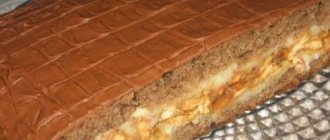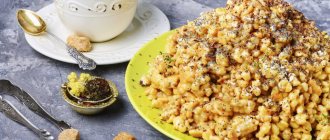Basic information about soda
There are several types of soda: soda ash - Na2СO3, bicarbonate (food soda) - NaHCO3, crystalline - Na2СO3•10Н2O and Na2СO3•Н2O, caustic - NaOH. According to the method of production, soda can be Leblanc or more pure ammonia. Although the soda we are accustomed to is a product of industrial production, mankind discovered the beneficial properties of alkali in prehistoric times, when natural soda was mined from lakes and small deposits.
Baking soda is a universal remedy not only for illnesses
Start of sodium bicarbonate production
Soda occurs naturally in a solid state as part of the mineral tron or in the water of some lakes and mineral springs. In addition, the substance can be obtained from the ash of certain plants. This is how the substance was mined until the beginning of the 19th century, but the need for soda was constantly increasing - it was necessary for the manufacture of soap, paints, glass, and medicine.
Currently, there are soda lakes in western Siberia and Transbaikalia. The most famous sources are Tanzanian Lake Natron and Californian Searls. Reserves of natural soda in the United States are so large that they cover almost half of the state's needs. There are no such large deposits in Russia and Europe, so soda is synthesized only by chemical methods from sodium carbonate and carbon dioxide.
The first to produce artificial soda from rock salt was the French chemist Leblanc in 1791. The recipe remained a secret for a long time and was the property of France. We can say that the specificity of French cuisine is explained by the fact that confectioners could obtain food alkali and were free to invent recipes for biscuits, puff pastries, and crumbly cookies. At this time, baking techniques using yeast were developing in Austria, Russia and other European countries. The trends continued until the 20th century and allowed Viennese craftsmen to reach unattainable heights in the preparation of the famous yeast rolls and cakes.
French chemist Nicolas Leblanc was the first to produce soda artificially.
Only 70 years after Leblanc, the Belgian Ernest Gaston Solvay developed an ammonia method for synthesizing soda from salt. The method was cheaper and better than Leblanc’s, and from the end of the 19th century it was switched to in Europe and the USA.
In Russia, soda dough won over yeast dough along with the development of the public catering network in the Soviet Union. Cooking is easier and the result is predictable, which cannot be said about yeast dough, so national traditions gradually gave way to quick and reliable cooking techniques.
You might be interested in: Sodium bicarbonate for the human body: more benefit or harm?
Composition of baking soda
Sodium bicarbonate is a fine, white, easily soluble powder in water. In reaction with acid, it forms water, which releases carbon dioxide. Weak alkali does not have a negative effect on body tissues and plants. Baking soda is in great demand; it is actively used in everyday life to maintain cleanliness, cooking, medicine, textile and chemical industries, metallurgy, etc.
The composition of sodium bicarbonate is the sodium salt of hydrocarbonate acid, which does not include proteins, fats and carbohydrates. The calorie content of the substance is zero. The minerals in baking soda are selenium and sodium.
Application
Baking soda is considered a universal remedy, as it is used in all kinds of fields: cooking, medicine, chemical, textile and even metallurgical industries.
• In cooking, soda is used to make confectionery and bakery products, prepare soda drinks, and is added during the preparation of meat dishes. Baking soda can be used to easily clean dishes. • Medicine. Sodium bicarbonate is added to medications to reduce the acidity of gastric juice. Soda is also widely used in folk medicine. There are various recipes for treating diseases, eliminating cold symptoms, maintaining youth and health. • Chemical industry - in the production of foam plastic, dyes, household chemicals, fluoride reagents. • Textile sector. Soda is used to make artificial leather and sole rubber. • There are also fire extinguishing methods using sodium bicarbonate.
Market Analytics
- COVID-19 is changing the rules of the game in the cosmetics market
- Beauty of the future: cosmetic innovations 2020
- New ingredients are the driving force of the cosmetics industry
Convenient search for beauty salons on our website
Beauty salons in Moscow Beauty salons in St. Petersburg Beauty salons in Ekaterinburg Beauty salons in Novosibirsk
Latest blog posts on our website
- Naturecream / Geranium (Pelargonium) oil for skin health and beauty
- Prostye-sovety / Save on a beauty salon: procedures that can be done at home
- Naturecream / Growth Factor - brings back youth?
- Oksana-Lezina / 3 effective abdominal exercises from a fitness instructor for beginners
- Prostye-sovety / Making perfect curls at home
- Prostye-sovety / Which hair removal method to choose
- Naturecream / Wrinkles Puppets
- Naturecream / PEPHA-TIGHT - instant skin lifting
- Naturecream / Blue light - a danger to the skin
- Naturecream / Cocoa Butter – A treat for the skin
Latest forum topics on our website
- Mrs._Smith / Badly sunburned! What to do?((
- Ice / Is it necessary to combine fitness classes with a diet?
- Antonova / What can be used for hair loss?
- Radio operatorKat / Who was on a protein diet?
- Suzanna / Mesotherapy on the face
Other articles in this section
| Vanillin For the vast majority of people, vanillin is a crystalline powder with a specific rich vanilla aroma. The demand for vanilla is much higher than the possibility of obtaining a natural product. Therefore, people had to use chemical reactions to reproduce artificial vanillin to satisfy all the needs. |
| Fresh mint Mint is a perennial aromatic plant of the Lamiaceae family. The scientific classification includes 25 species of mint and about 10 natural hybrids. All of them contain a large amount of menthol, but differ in the chemical composition of volatile substances and essential oils, and also have different odors. Some types of mint are cultivated as a medicinal and essential oil plant in many countries. Wild mint prefers moist soils and grows almost everywhere throughout Europe. |
| Chicory Chicory (lat. Cichurium) is a perennial herbaceous plant belonging to the family Soleaceae. It is found everywhere in Russia, Belarus and Ukraine, growing in meadows, near roads and wastelands. |
| Cardamom This spicy seasoning has been known since ancient times. Cardamom was credited with healing properties. It was believed that it could relieve migraines, colds, and cure liver and intestinal diseases. Greek winemakers could not imagine drinks without cardamom grains. In the Middle Ages, the fruits began to be used for salting meat and fish. Until now, it is popular all over the world and in terms of sales - it ranks second after black pepper. |
| Ketchup It is believed that ketchup was first prepared in China. And it first came to Europe only in the 17th century. Then it was little similar to the modern analogue of this sauce - it included mushrooms, beans, walnuts, garlic and wine. The main ingredient that now ranks first when making ketchup - tomatoes - was not part of the first ketchup made. In Europe, this sauce quickly took root and became widespread. The classic recipe for ketchup with tomatoes appeared only at the beginning of the 19th century in culinary notes and recipes of American housewives. |
| Coriander Coriander is an annual herbaceous plant belonging to the Apiaceae family. Even the ancient Greeks treated it with great respect and considered it a medical remedy. Later, thanks to the Romans, coriander was discovered in England and Western Europe. Then he ended up in America and then in India. |
| Ginger Ginger is an exotic perennial plant native to tropical and subtropical climates. The countries of Southeast Asia are considered to be its historical homeland. Currently, industrial plantations of cultivated ginger are located in China, India, Indonesia, Australia and some West African countries. A rare type of ginger is grown in Jamaica, which has a unique delicate aroma. |
| Cloves Cloves are a spice that consists of the dried, unopened buds of the clove tree. This plant grows only in warm countries with a humid, maritime climate. The cultivation of clove trees is widespread in Indonesia, Malaysia, Tanzania, Grenada and Madagascar. |
| Apple cider vinegar 3% Apple cider vinegar is vinegar obtained by fermenting raw materials from apples. Moreover, it has a richer taste than alcohol. Apple cider vinegar is mild in taste and aromatic. |
| Cinnamon Cinnamon is a spice made from the dried bark of the evergreen tree of the same name. Its homeland is Sri Lanka; it is in this area that the best raw materials for the production of spices grow. It is also grown commercially in other countries with tropical climates. It goes on sale in the form of twisted sections of bark or in crushed form. It is considered more reliable to purchase non-powdered cinnamon, as foreign substances may be added during grinding. |
Production process
Baking soda and soda ash are synthesized using the Solvay ammonia chloride method. The sodium chloride concentrate is saturated with ammonia and exposed to carbon dioxide. The resulting sodium bicarbonate is poorly soluble in cold water and is easily separated by filtration. After calcination, soda is formed in powder form.
Deposits of nahkolite and trona minerals, including soda, are found in the USA, Turkey, Mexico, and Uganda. The throne mined underground is raised to the surface for further processing or hot water is poured into the underground voids and the crystals are evaporated from it. After crushing and heating the crystals, unnecessary gases are removed, and the mineral is filled with water and filtered. The remaining substance is soda, it is dried, sifted and packaged.
Chemical formula of baking soda
Sodium bicarbonate formula: NaHCO3. The chemical composition is simple:
- One atom each of sodium, hydrogen, carbon.
- Three oxygen atoms.
White powder, odorless, salty taste. Sodium bicarbonate is highly soluble in water; upon contact with air, decomposition is possible only at high humidity. Releases carbon dioxide when exposed to acid or high temperatures.
Baking soda is used to prevent and treat various diseases
How is baking soda different from baking soda?
Both substances are sodium compounds, but their chemical formulas and applications are somewhat different:
| Food | Calcified |
| NaHCO3 | Na2CO3 |
| Used in cooking. | Cannot be used for food. |
| Weak alkali - pH-8. Safe for use at home. | A stronger alkali is pH11. Application requires compliance with safety regulations. |
| Has moderate cleaning properties. | Cleaning and degreasing properties are more pronounced. |
| Absorbs odors and can be used to deodorize surfaces and indoor air. | Inhalation of vapors causes irritation of mucous membranes and allergic reactions. |
The main difference is the pH value. The pH activity of baking soda is close to neutral, the powder cannot cause harm to health, provided the recommended dosage is followed.
You might be interested in: Table soda: healing properties, uses and healing
Caustic soda
Caustic soda or caustic is a chemical substance widely used in various industries: for the production of paper and synthetic fibers, for bleaching fabric fibers and silk production, in the production of toilet and laundry soap, organic dyes for various purposes, in technologies for purifying petroleum products and mineral oils, in the chemical and metallurgical industry.
Baking soda is white, opaque crystals that melt when exposed to air. Completely soluble in water with the release of heat. The caustic solution has soapy properties, which is successfully used in the production of detergents and cleaning products.
It also has other names - caustic soda or caustic alkali and sodium hydroxide (NaOH). The concept of “caustic alkali” is based on the ability to decompose paper and other organic matter, as well as infect the skin with the formation of burns.
The industrial production of alkali is based on the use of chemical and electrochemical methods.
- Electrochemical method . In special containers in a solution of table salt, the process of electrolysis occurs, which is accompanied by decomposition into ions. Under the influence of direct current, hydrogen and chlorine gas are released, and sodium and OH ions accumulate in parallel, resulting in the formation of caustic soda.
- Chemical method . Caustic soda is produced using the limestone or ferrite method.
In Russia in the 19th century, the lime method for producing soda was mastered. The soda ash solution is heated to 60 °C and slaked lime is gradually added.
The mixture continues to be heated and stirred. Causticization is accompanied by abundant foaming. After settling, liquid caustic soda and a precipitate are formed.
To increase the concentration or obtain solid crystals, the solution is evaporated.
The ferrite method includes two stages. In the process of calcination of sodium carbonate with iron oxide, sodium ferrite is formed, which in the next stage is decomposed by water. The caustic solution is evaporated until crystals precipitate, and the iron oxide is reused.
Caustic soda is supplied in polypropylene bags, liquid caustic soda is shipped in metal barrels or tanks.
Acid-base environment of the body
The functionality of the human body depends on the balance of acid and alkali in the tissues. Only in conditions of balance is normal metabolism, full immunity and the functioning of internal organs possible.
The acid-base balance indicator is determined by the pH indicator (power hydrogen), the numbers in it indicate the number of hydrogen atoms in the solution.
- Neutral environment - pH7.0.
- Acidic environment - pH from 0 to 6.9.
- Alkaline environment - pH from 7.1 to 14.0.
The normal environment of the body is slightly alkaline; the ratio of acid and alkali in health is strictly regulated naturally and is maintained in the pH range of 7.37-7.44. Even a slight deviation beyond a narrow range leads to illness, and with significant deviations, cells are destroyed, enzymes lose efficiency and death is possible.
Video: acid-base balance
Why does the body become acidic?
The main reason for the acidification of internal fluids, which normally should be slightly alkaline, is poor nutrition. Our menu is becoming more and more sugar, fast carbohydrates and highly processed foods.
The body is a perfect system, capable of restoration and self-adjustment. Buffering properties maintain an optimal pH balance and neutralize acids, but under increased stress, forces are diverted from immune defense. We complain about joint pain, chronic fatigue, brittle bones, blurred vision and go to doctors who prescribe a course of medications. But in many cases, symptoms can be eliminated by simply changing your diet and introducing alkaline foods into your diet. The menu should contain 80% alkaline foods - vegetables, fruits and cereals, acidic foods - meat, sugar, dairy products, baked goods. In fact, the diet of a modern city dweller consists of 90% acidifying foods.
How to overcome acidification of the body and make alkalization with soda: Alkalinization of the body with baking soda at home - rules of administration, reviews
You can help your body overcome acidification with regular baking soda. By establishing a normal pH level, you:
- Get rid of fatigue and get sick less often.
- Restore digestion.
- Facilitate the work of the kidneys.
- Create an unfavorable environment for the development of parasites and worms.
- Strengthen tooth enamel and bone tissue.
Normal pH level - and the person feels great
The healing properties of soda
The beneficial properties of NaHCO3 have been known for a long time and are used in folk and traditional medicine. The alkaline solution is drunk, used in injections, rinses, compresses, and inhalations. Sodium bicarbonate is effective as an antiseptic, emollient, anti-inflammatory, expectorant; its effect manifests itself quickly and, if the dosage and treatment regimen are followed, does not cause harm to health.
- Abrasive action
Fine powder can be used to brush your teeth. A weak alkali removes yellow plaque, which is why it is often added to toothpastes. Soda in its pure form acts as an abrasive - you should not use it constantly so as not to damage the enamel. It is better to dip the brush in the powder and apply toothpaste on top. Periodic treatment of the oral cavity with this composition helps maintain fresh breath and a snow-white smile.
You might be interested in: How to keep your teeth healthy with baking soda - tips and tricks
- Neutralization of acidity
Normal stomach acidity is higher than that of blood and other tissues of the body - without gastric juice it is impossible to digest food. However, excess acid leads to heartburn, stomach pain, bloating and other unpleasant symptoms. Sodium bicarbonate is a natural antacid that neutralizes stomach acid. You can extinguish acidity with a solution of baking soda or pharmaceutical preparations including NaHCO3.
- Removing mucus
With bronchitis, the mucous membranes become inflamed and the lumen of the bronchi narrows. A comprehensive course of treatment necessarily includes the elimination of painful coughing, attacks of which usually worsen at night. Drinking soda, inhaling and rinsing help soften phlegm and speed up recovery.
The benefits and harms of baking soda
Soda is one of the most simple and easily accessible medicines. If you have a sore throat, prepare a warm gargle using hot water and baking soda. It helps liquefy and expectorate mucus, and also acts as an excellent anti-inflammatory and bactericidal agent.
People who have heart problems should definitely have baking soda in their arsenal. If you suddenly begin to worry about an attack of arrhythmia, drink a weak soda solution, which will quickly bring your heart rhythm in order. Also, such a drink will be very useful if you suffer from hypertension. The soda solution will remove excess fluid from the body, thereby lowering the pressure in the blood vessels.
A solution of water with a small amount of soda is an excellent remedy for combating various inflammations. For example, it is very often used for conjunctivitis, foot fungus or rough skin on the knees and elbows.
Soda in the form of soda baths is very useful for the skin. It is enough to dilute half a cup of soda in the bathroom and take it for 10-15 minutes. As a result, you will improve blood circulation in the body, as well as soften the skin and help get rid of wounds, infections, rashes, smallpox, etc.
For a long time, soda was considered a wonderful remedy for heartburn. Doctors recommended drinking a small amount of water with a pinch of soda and lemon juice. However, recently it was found that after taking such a solution, after some time, a reverse reaction occurs called “acid rebound” - the soda solution provokes the release of even more gastric juice. In addition, due to the formation of carbon dioxide, bloating occurs.
Traditional medicine also talks about the benefits of soda. This remedy helps get rid of itching after insect bites, help with gastrointestinal upset and vomiting. She will also become your friend if you decide to become the owner of snow-white teeth. Use baking soda once or twice a month to clean your tooth enamel. Thanks to its fine abrasive structure, it will clean the surface of the teeth without damaging their surface.
The harm of soda
We can talk for a long time about how beneficial soda is for humans. But do not forget that in some cases it can cause harm to the body.
If the water soda solution has a very weak alkaline reaction, then the harm of baking soda powder can be very serious, since it is a strong alkali. Therefore, it is necessary to avoid prolonged contact of soda with the skin, as well as contact with mucous membranes or eyes. As a result, you will get irritation or even burns.
If you have been prescribed a low sodium diet by your doctor, you should be careful when using baking soda for a variety of purposes. Also, soda in the stomach can react with various medications. If you are taking the pill, be sure to get medical advice regarding this issue.
Pregnant women and nursing mothers, as well as children under 5 years of age, are advised to exclude soda from their diet.
Author: Svetlana Ponomareva
How to use baking soda for medicinal purposes
Colds
Cough
- With a dry cough, soda inhalations become a real salvation - the sputum softens and leaves faster and more painlessly. The procedures can be carried out over a pan with a warm solution (up to +57°C) or using a nabulizer. It is better for children to do inhalations with a nebulizer or heat the medicinal solution to +30°C. Duration: 10 minutes for adults and 3 minutes for children.
- Rinsing with a solution of two teaspoons of baking soda in a glass of warm water quickly relieves inflammation and speeds up the removal of phlegm.
- Place mashed hot potatoes, mixed with a tablespoon of soda, dry mustard, honey and sunflower oil, in a plastic bag and wrap in a napkin. A warming “pillow” on the chest will warm the airways, and they will quickly clear mucus.
- Add half a teaspoon of soda and a couple of spoons of honey to hot milk. Drink before bed to relieve inflammation and ease coughing. This drink is given to children when they are tormented by coughing attacks.
The benefits of soda in everyday life and for health
The healing properties of soda help maintain beauty and health.
- For stomach diseases associated with high acidity, attacks of heartburn are eliminated by using an internal solution of soda (1 g per half glass of water) several times during the day.
- For thermal and acid burns, wash the skin area or apply a napkin soaked in a soda solution.
- An aqueous solution of baking soda or tablets are used for motion sickness in transport.
- Insect bites are treated with a soda solution or a soda paste is applied.
- Soda foot baths will help relieve fatigue and eliminate sweating.
- When coughing, drink hot milk with 1 tsp before going to bed. soda
- For sore throat, toothache, gumboil and stomatitis, soda rinses of the mouth are indicated. Dilute 1-2 tsp. baking soda in a glass of warm water.
- Soda actively fights infectious diseases. When there is suppuration on the finger, you need to steam it in a soda solution (2 tablespoons per 0.5 liters of water). Fungal skin lesions are treated with soda slurry at room temperature. Eliminate the smell of sweat by wiping problem areas with a soda solution.
- For eczema, soda baths for 20 minutes help, after which the skin is lubricated with olive oil or cream.
- Baths will help get rid of calluses and corns on your feet. After the procedure, additionally treat with pumice or a file for foot care.
Baking soda is indispensable in every home and kitchen.
- An effective cleaning product that is safe for health.
- An alkaline soda solution removes grease from dishes well.
- Baking soda removes foreign odors. Knives and plates can be easily removed from the smell of fish or onions by rubbing with baking soda. In the refrigerator, baking soda will eliminate all excess odors.
- When cooking, soda is added to the beans, and the meat is rubbed with soda to soften it.
- A pinch of soda when making jam with skins will help make them softer.
- Of course, no baked goods are complete without baking soda, which makes cookies, pies, gingerbreads, and dumplings soft and airy.
Soda in cooking
Baking soda is mainly used to leaven baked goods, but this is not the only beneficial property of sodium bicarbonate.
Pancake recipes here: Custard pancakes with soda - step-by-step recipes with photos, you'll lick your fingers
In addition, soda can do:
- Tough meat is softer.
- The omelette is more fluffy.
- Fruits and berries are sweeter.
- Boiled vegetables are greener.
- Tea and coffee are more aromatic.
Starchy vegetables become lighter in color after washing in a soda solution, and peas and beans cook faster in alkaline water.
Soda does not have to be present in pancakes and pancakes. You can do without soda.
Price, expiration date and storage rules
- Baking soda is one of the cheapest products. A half-kilogram package costs only 15 rubles.
- The guaranteed shelf life is 12 months, but in a dry place and secure packaging, the alkali retains its properties longer.
- When purchasing packaging, make sure it is intact. Powder in an unsealed package absorbs moisture and loses its beneficial properties. At home, it is advisable to pour the soda into a hermetically sealed glass or metal container and store it at room temperature.
- It’s easy to check the quality of the alkali - pour vinegar onto a spoon of powder. A violent reaction should occur, accompanied by hissing and the formation of foam.
Take advantage of all the beneficial properties of baking soda - quality is not always determined by price. The usual product seems outdated, but we use only part of its capabilities. We often chase beautiful packaging and advertised products, forgetting about the side effects of the latest medicines and detergents. Tea soda is completely harmless provided the correct dosage and moderate use.











